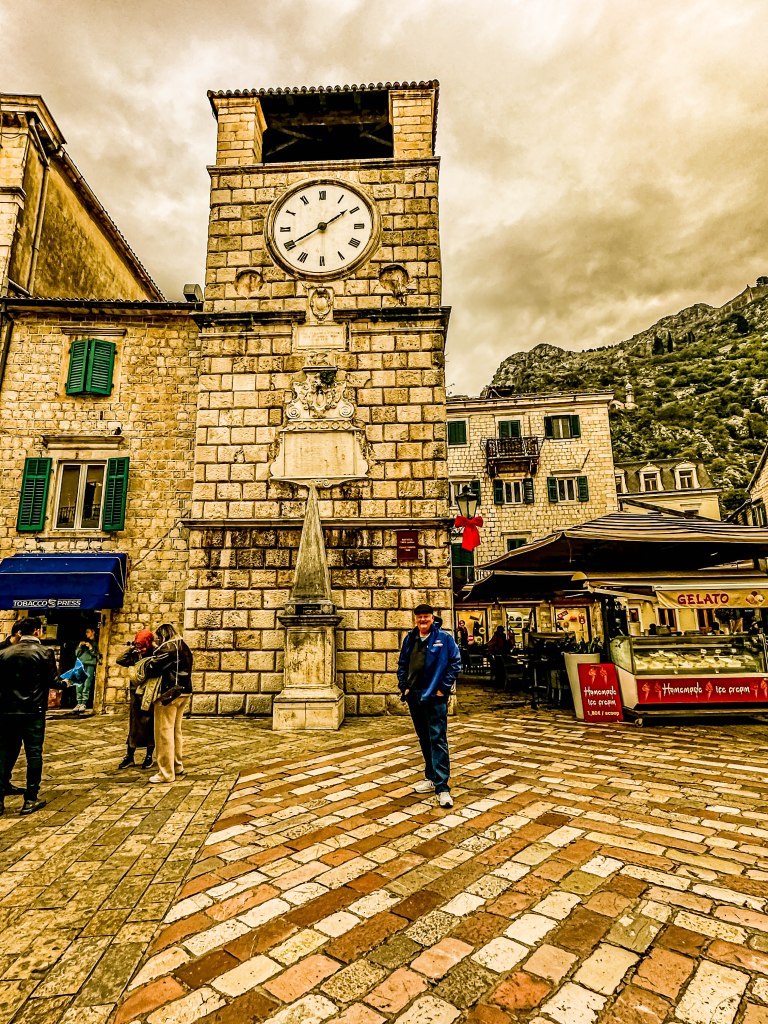November 20, 2023:
We sailed into Kotor, Montenegro, on a cold and overcast morning on November 20, 2023, and were at anchor that day. What a change from Split! The sail in was lovely as you sail through four glacial fjords open to the ocean.




Croatia is less than 50 miles to the north, but this is clearly a very different country! Upon boarding our tenders, we motored into the town of Kotor, and our small group boarded its mini-bus for a day exploring the outskirts of Montenegro. Our tour would take us almost all the way to the southeastern border with Albania, as we cruised around on Lake Skadar, and then traveled to the wine-growing region outside the capital, Podgorica, for a visit to a family-owned vineyard.
The first established civilization in the country dates to the 6th Century AD, fueled by the migration of Slavic people from Ural Mountains, although virtually all seafaring peoples dating back to at least the Greeks discovered and stopped in the town. Kotor is a medieval Venetian fortified city; 1 of five in Montenegro, and it was ruled by the Venetians for 400 years. Following that, the Ottoman Empire ruled parts of modern-day Montenegro for nearly three centuries. It was declared independent in 1878. Following that, various kingdoms and factions ruled. Briefly, the country was an independent kingdom starting in 1910 (under King Nicholas I), which was allied with the Allies during World War I.
After 1922, Montenegro became the Oblast of Cetinje in the Kingdom of Serbs, Croats and Slovenes, and later, part of the Kingdom of Yugoslavia. In 1941, Nazi Germany and Fascist Italy occupied Montenegro, and it was ruled during WWII by the Italy through the puppet government of the Kingdom of Montenegro. Howeve, the Montenegrins opposed the Axis powers, and one of the first uprisings against the Nazis took place in the area around Lake Skadar in 1941. Montenegro was liberated in 1944, mostly through the efforts of the Yugoslav Partisan resistance. Following WWII, Montenegro became one of six constituent republics which formed the Socialist Federal Republics of Yugoslavia under Josip Broz Tito. The SFRY lasted until 1992, when it was dissolved. However, Montenegro became part of the smaller Federal Republic of Yugoslavia, with Serbia. The other four republics of Yugoslavia declared their independence in 1992, and were attacked by Serbia and Montenegro in the Balkan Wars of the 1990s. Following the Balkan War (which lasted from 1992-96 here), Montenegro gained some further independence from Serbia, but remained part of that Republic until 2006, when there was a referendum to become independent.
Montenegro’s administrative capital is Podgorica, though its cultural center is the older historical capital city of Cetinje. Today, the population of Montenegro is 660,000 people, living in only 40,000 square miles. About 200,000 of them live in Podgorica.
Montenegro was the poorest Balkan country pre-Tito, but was greatly improved under his leadership, particularly with his programs to expand infrastructure and tourism. Today, Montenegro is not part of the EU, but use they Euro, and hope to be approved for membership in the EU by 2025. It has been a member of NATO since 2017, despite the strong opposition of Russia.
When Jim and I visited in 2015, Montenegro had clearly established strong ties with Russia, and was profiting handsomely from Russian tourism and investment, as evidenced by the plentiful Russian yachts we saw on our last visit. However, our guide explained that Montenegro looks toward Europe as its future, and sides heavily with Ukraine in its current war with Russia. In fact, Montenegro has opened its borders to Ukrainian refugees (over 60,000 of them currently live in the country; about 10% of the population), and Montenegro’s government granted the Ukrainian refugees all the rights and benefits of Montenegrin citizenship (except the right to vote) with the full support of the Montenegrin people.
The hills around the bay used to be all covered in trees, but they were all chopped down for building ships.




We headed to Lake Skadar, and drove down the coast of the Adriatic towards Albania. I’m going to tell you that while our guide’s English was pretty good, he didn’t give us many place names, and those he did, I have no idea how to spell, so this post is a little light on geographic detail.
Our first stop was shortly after the Adriatic coast town of Budva, which is the main tourist town in Montenegro. Most accommodations in Budva are affordable by Montenegrin standards, but are largely unoccupied in the winter months like now. In the summertime, the population of Budva goes from 25,000 people to 75,000. In 1975, the area suffered a huge earthquake (7.5), which destroyed most of the southern coast, so almost nothing of a historical nature remains here.
We made a photo stop along the Island of St. Nicola, where the entire island is owned by the country of Montenegro, but is leased to the hotel operated there. St. Nicola is really a party town for those privileged few staying on the island, and the island is very private and exclusive, because no one other than guests of the hotel are allowed on to it. It was the first 5 star hotel in country. Sadly, it has been closed since 2020, but plans to reopen next year.


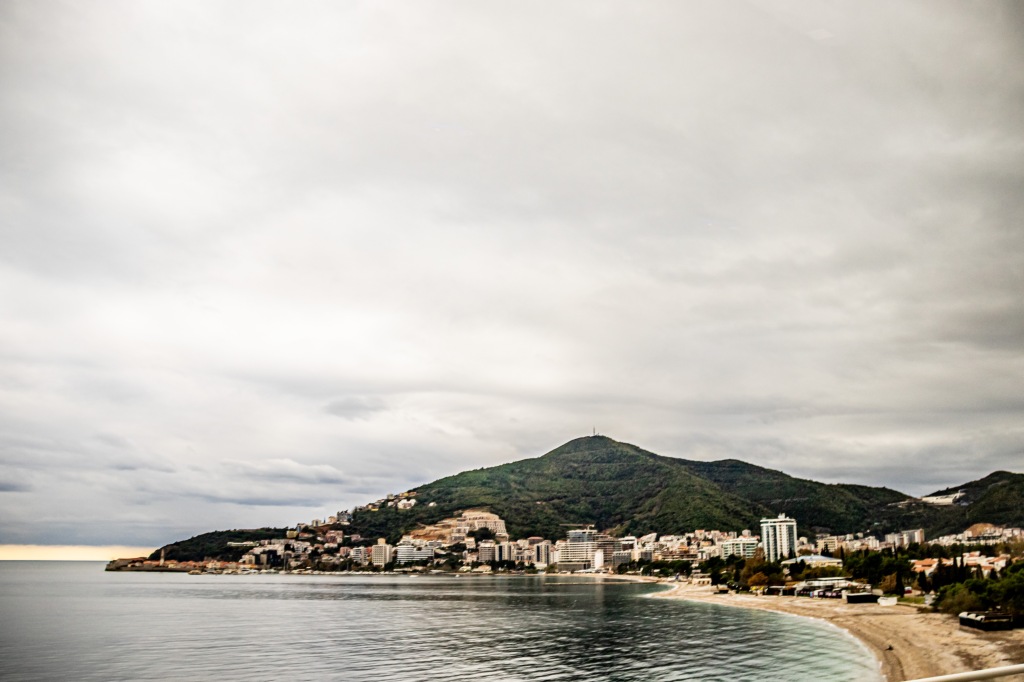

Lake Skadar is the biggest lake in the Balkan Peninsula. It is 500-800 square kilometers (the variance is due to the amount of snow melt running into the lake). Most wine, fruits and vegetables are produced here in the fertile valleys of Montenegro. In fact, the guide told us that the biggest wine producer in Europe is located here (but I’m having trouble believing it). That producer makes 33,000,000 liters/year.
We entered the lake area in a small town on the northeastern side of the lake. There was a monument to the resistance fighters from WWII, because this is the area the resistance to the Axis powers found its foothold in Montenegro, and it was also the site of the biggest uprising against the Nazis before the country was liberated.
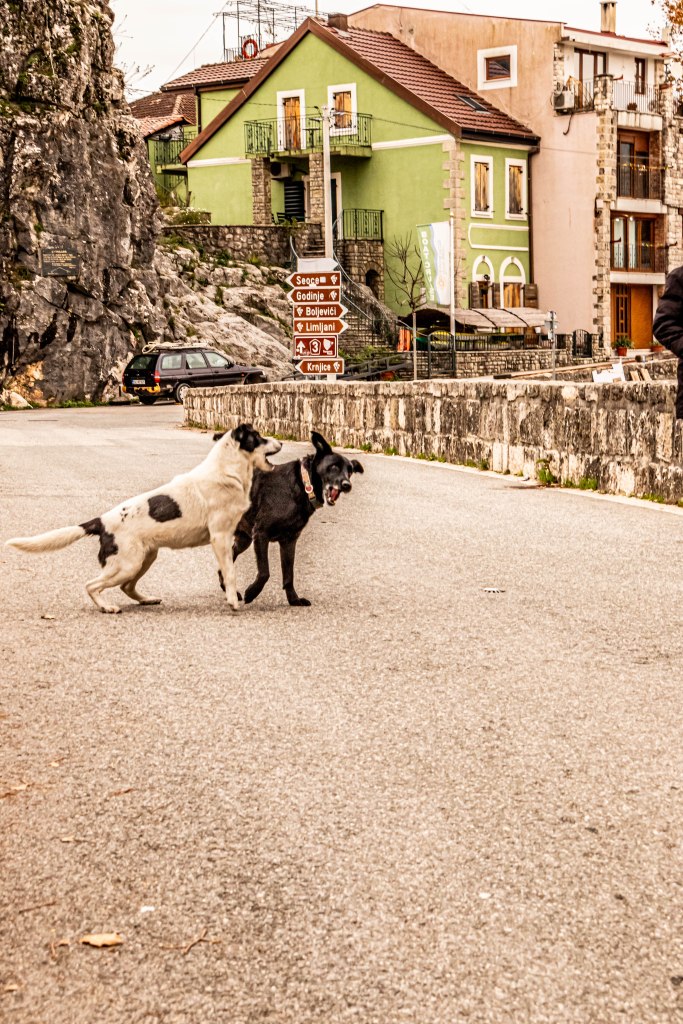



We boarded a small boat, and all of us were thankful that at least the cabin was glassed in, because it was really cold (temps in the low 40s). Of course, the solution for that was that the deckhand offered us samples of the local wine to try, and some local pastries, which were really fried dough with local honey poured on. As tasty as these offering were, though, we were all still feeling the cold. So the deckhand offered to let us try his dad’s batch of the local spirits called “raka”, which is like grappa. Jim was game and tried it, but he said it was very harsh.

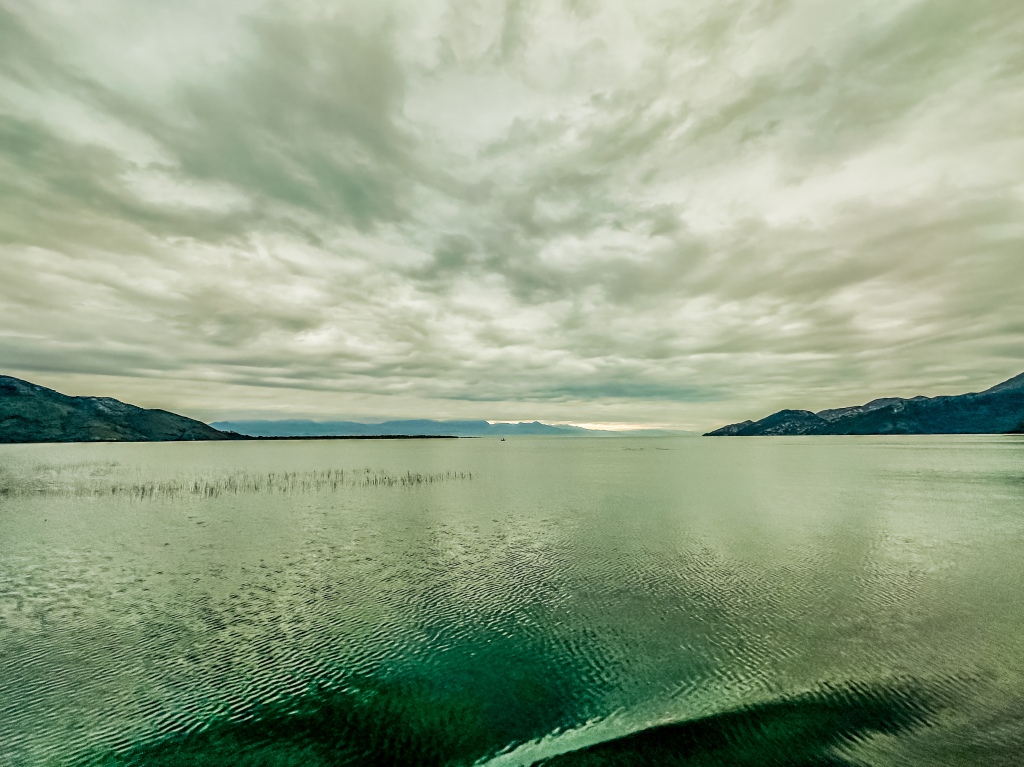



The lake is a huge bird sanctuary, and the locals call it the bird airport because of the large numbers of migratory birds who land here during the spring and fall. We saw a little island which was the first prison established by the first king of Montenegro, Nikolas I. Centuries later, it still looks bleak and forbidding. None of us objected too much when the crew headed us back towards town (and our warm bus).



From Lake Skadar, we drove inland towards the capital of Podgorica into the wine growing region. Our second stop was at a family-owned vineyard. I’m not entirely sure what the name of the vineyard was, but some of the wines had a logo with three sisters on it. The oldest daughter was our guide, and she was very knowledgeable, with good English. After touring the cellar and looking over the vines, we were taken to a charming gathering room (with a cozy fireplace!) above the family home. There we tasted three of the family’s wines, which were paired with hearty samples of the local smoked meats and cheeses. None of the grape varietals were familiar to us, but the wines were definitely drinkable.






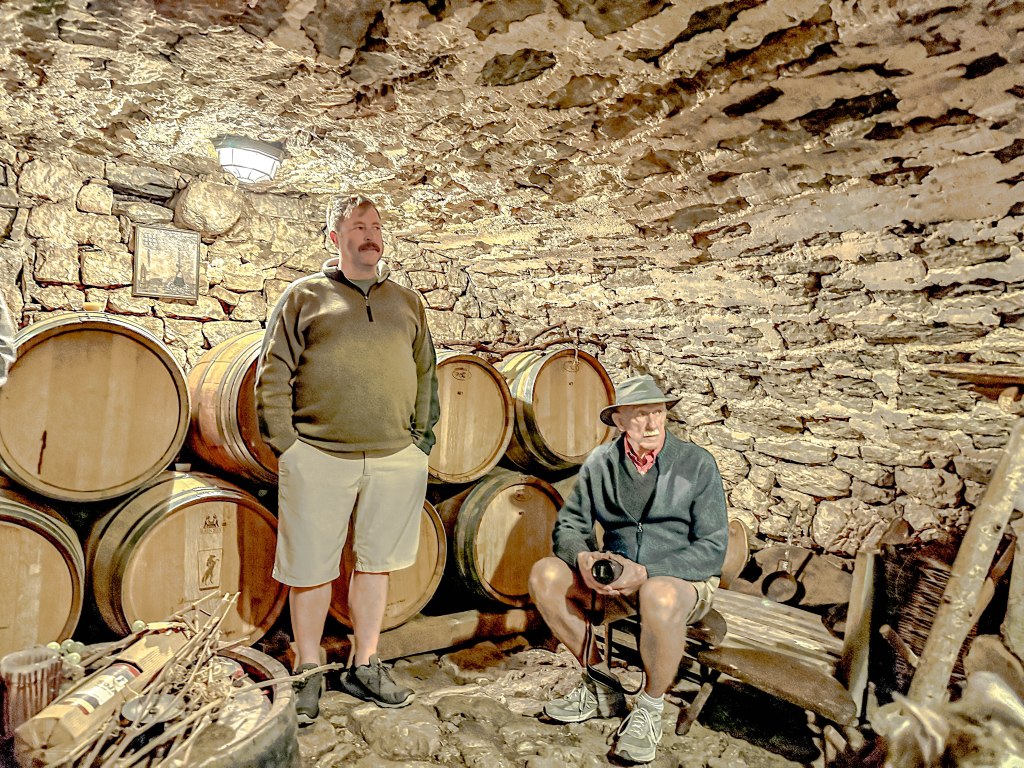

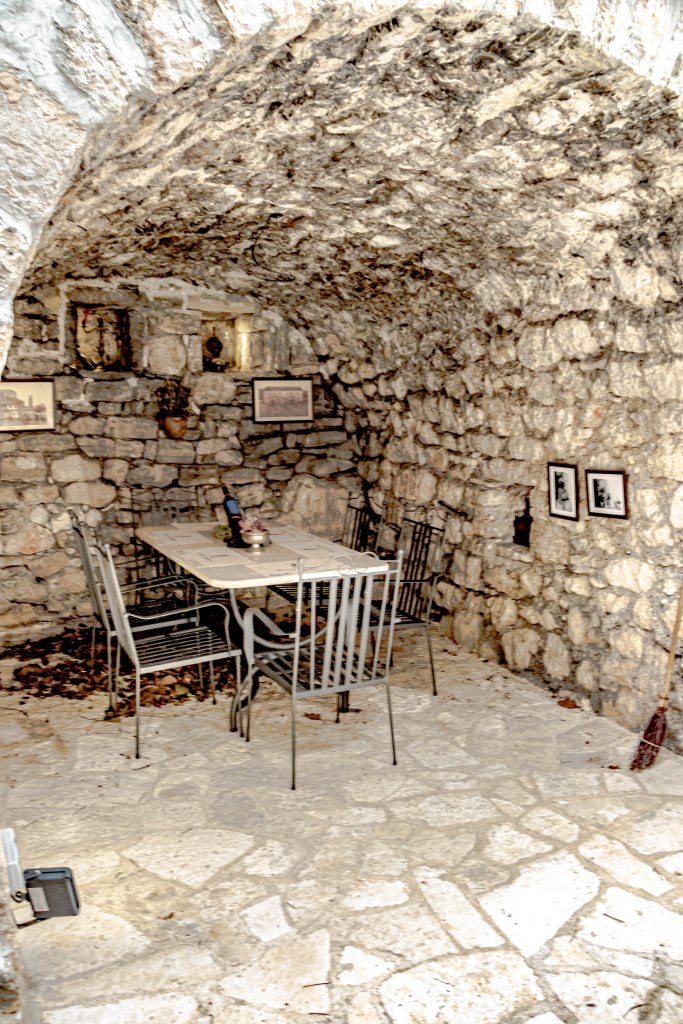



Then we headed back to Kotor. Jim and I made a quick circuit around the old town to refamiliarize ourselves with the place, but we had an early departure because of the scenic sail out of the bays. We had a lecturer aboard (Dr. Sherry Hutt) who did a great job telling us all about how the bays were formed geologically, and also the history of this area. I have to say, though, that this area is much more visually appealing on a sunny day in the summer!



